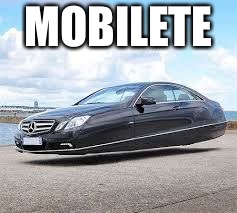electronblue
Active Member
I should add many limited scope Level 3-4 projects ”like” freeways too for their simplicity.
So in the Waymo vs. Tesla comparison a much more pertinent point is Waymo has been working on a car that can go from start to finish autonomously. Irrespective of the SAE Level this is a hard nut to crack and one where city streets are the more important problem because they can not be avoided when driving from start to finish autonomously.
Simplicity of freeways is no help for such a car because it will also have to be able to join the freeway autonomously unlike other systems that can just rely on a driver to join the freeway.
So in the Waymo vs. Tesla comparison a much more pertinent point is Waymo has been working on a car that can go from start to finish autonomously. Irrespective of the SAE Level this is a hard nut to crack and one where city streets are the more important problem because they can not be avoided when driving from start to finish autonomously.
Simplicity of freeways is no help for such a car because it will also have to be able to join the freeway autonomously unlike other systems that can just rely on a driver to join the freeway.





